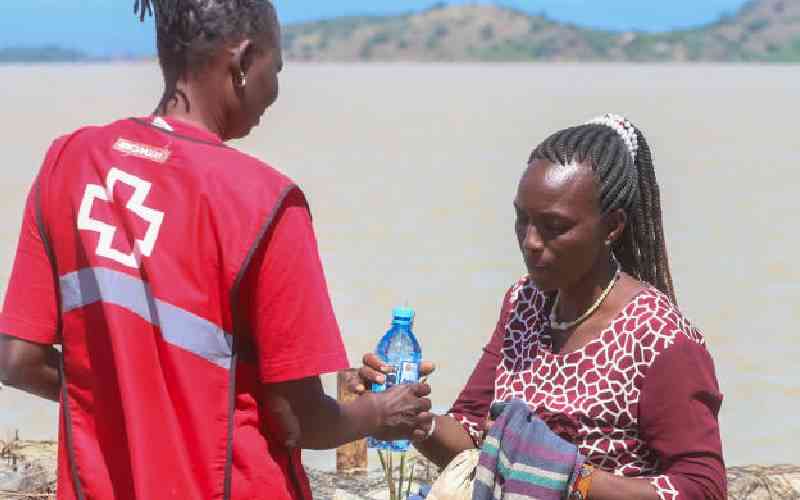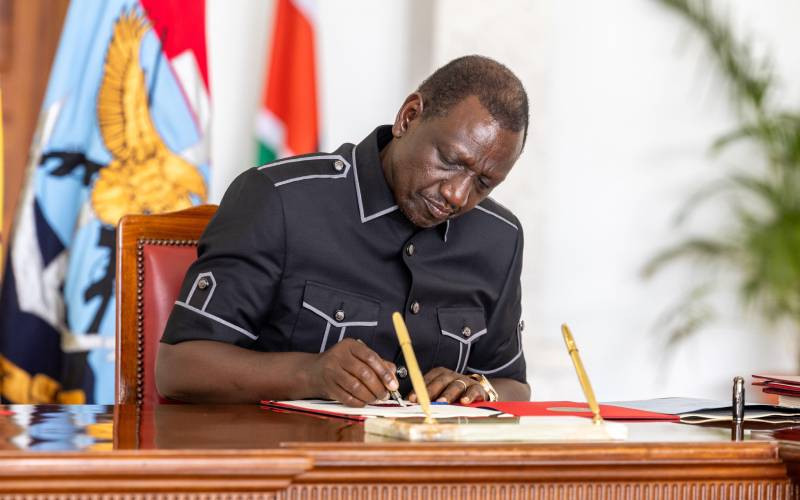By Machel Waikenda
twitter@MachelWaikenda
Jan Morris tells us “great minds have been fostered entirely by staying close to home. Moses never got farther than the Promised Land. Da Vinci and Beethoven never left Europe. Shakespeare hardly went anywhere at all”.
Really? But we also know that some of the greatest civilisations were as a result of bold adventurers; some of greatest tales from seasoned travellers, and some of the most developed nations today are built on the foundation and network of a solid railway grid.
When President Uhuru Kenyatta led other East African leaders in breaking ground for construction of the standard gauge railway, it opened up the possibility of more local and regional development.
The project involves the development of a modern, high speed, high capacity standard gauge railway for passengers and freight within the Northern Corridor. Passenger training on the rail line will initially be diesel-powered, cruising at a speed of up to 120 km/h. Once the country is able to supply adequate electricity to the line, the trains will then be converted to electric-powered locomotives.
This will increase the speed to 160 km/h – covering the 519km Nairobi-Mombasa route in less than four hours. This will lead to faster and more efficient transport across the country and the region. On completion, the railway line will connect Kenya, Uganda, Rwanda and South Sudan.
This project is expected to transfer freight from roads to rail reducing rapid road damage, provide safe and rapid inter-city passenger transport. This will help Kenyans save considerably on transport costs. Currently, road transport accounts for 80 per cent of the total movement of passengers and freight in the country. When completed, the expanded railway network will ease movement of freight on roads where it causes damage and consequently high road maintenance costs, as well as road traffic accidents. The scheduled construction of the project heralds economic transformation arising from an expected slashing of commodity prices. Basic commodity prices that have remained high are expected to drastically drop by 2017 when the new line is commissioned. The Vision 2030 flagship project will present an opportunity to run freight trains with 54 double-stack flat wagons carrying 216 twenty-foot equivalent units (TEUs) per trip.
The groundbreaking that was done on Thursday also sees Kenya taking the lead to confirm its commitment to operationalise the tripartite agreement signed by the governments of Kenya, Uganda and Rwanda in Mombasa last August. The tripartite agreement committed the three states to explore avenues to build a standard gauge railway connecting Mombasa, Kampala and on to Kigali. Burundi and South Sudan have also expressed interest to be part of the project.
Standard gauge is safer, faster and more reliable and 80 per cent of the world uses it and, therefore, equipment is easily accessible and cheaper. Standard gauge has greater carrying capacity and, therefore, more efficient. Completion of the project will also see the Kenyan waterfront gain an expanded hinterland with a more reliable and efficient interstate and intercity railway network for moving goods and people.It is expected the costs of transport and logistics will initially drop to between 15 per cent and 20 per cent, which will support rapid industrialisation and sustained economic growth of between 8 per cent and 10 per cent.
The expanded and integrated network will promote equitable social and economic development in the region resulting in wealth creation and poverty reduction. This will also lead to increased inter-country trade and greater competitiveness in international trade. The project will also open up frontier areas like Northern Kenya and South Sudan ensuring that the county increases exploitation of untapped resources and tourism potential. Kenya and the rest of the region will become an attractive investment destination.
But Kenya must leverage its strategic position and experience to effectively compete with Tanzania, which is also upgrading its railway system. The upgraded Tanzanian central line on a standard gauge is expected to ship 35 million tonnes of freight annually to Rwanda, Burundi, Uganda, and eastern DR Congo.
These countries rely on Kenya’s rail and road infrastructure to transport goods from the Mombasa port, making Tanzania a great threat to Kenya’s position as the gateway to East Africa. By 2017, Tanzania is set to have four ports when Kenya will have only two — a situation that may significantly shift the flow of trade into the neighbouring country.
Stay informed. Subscribe to our newsletter
 The Standard Group Plc is a
multi-media organization with investments in media platforms spanning newspaper
print operations, television, radio broadcasting, digital and online services. The
Standard Group is recognized as a leading multi-media house in Kenya with a key
influence in matters of national and international interest.
The Standard Group Plc is a
multi-media organization with investments in media platforms spanning newspaper
print operations, television, radio broadcasting, digital and online services. The
Standard Group is recognized as a leading multi-media house in Kenya with a key
influence in matters of national and international interest.
 The Standard Group Plc is a
multi-media organization with investments in media platforms spanning newspaper
print operations, television, radio broadcasting, digital and online services. The
Standard Group is recognized as a leading multi-media house in Kenya with a key
influence in matters of national and international interest.
The Standard Group Plc is a
multi-media organization with investments in media platforms spanning newspaper
print operations, television, radio broadcasting, digital and online services. The
Standard Group is recognized as a leading multi-media house in Kenya with a key
influence in matters of national and international interest.







